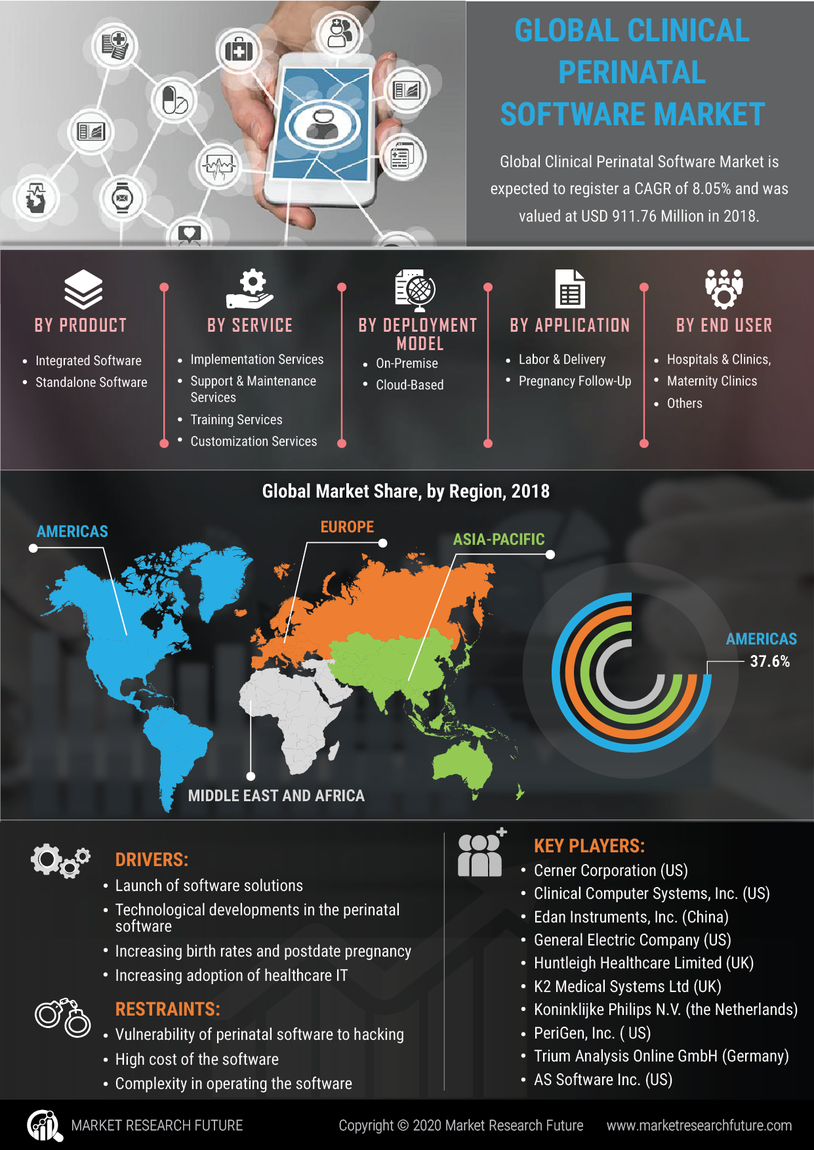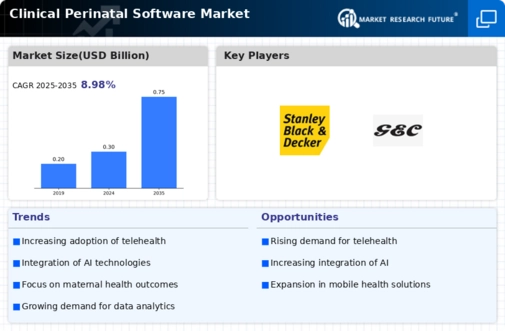Growing Investment in Healthcare IT
Investment in healthcare information technology is on the rise, which is significantly benefiting the Clinical Perinatal Software Market. As healthcare organizations allocate more resources towards IT infrastructure, the demand for clinical perinatal software is expected to increase. This investment is driven by the need for improved data management, interoperability, and enhanced patient care. According to industry reports, healthcare IT spending is projected to grow substantially, with a notable portion directed towards maternal health solutions. This trend indicates a strong commitment to leveraging technology in healthcare, thereby creating a favorable environment for the Clinical Perinatal Software Market to thrive.
Advancements in Healthcare Technology
Technological advancements are significantly influencing the Clinical Perinatal Software Market. The introduction of sophisticated software solutions that leverage data analytics, machine learning, and telemedicine is transforming how perinatal care is delivered. These technologies facilitate real-time monitoring of both maternal and fetal health, enabling healthcare providers to make informed decisions. The market is projected to grow as hospitals and clinics adopt these advanced systems to improve patient outcomes. Furthermore, the increasing reliance on electronic health records (EHR) is driving the demand for integrated clinical perinatal software that can seamlessly connect with existing healthcare infrastructures, thereby enhancing the overall efficiency of maternal care.
Increased Focus on Patient-Centric Care
The shift towards patient-centric care is a significant driver in the Clinical Perinatal Software Market. Healthcare providers are increasingly recognizing the importance of involving patients in their own care processes, particularly during pregnancy. Clinical perinatal software solutions that offer personalized care plans and educational resources are becoming essential tools for providers. This focus on patient engagement is supported by data indicating that informed patients tend to have better health outcomes. As healthcare systems strive to enhance the patient experience, the demand for clinical perinatal software that facilitates communication and education is expected to rise, further propelling market growth.
Rising Demand for Maternal Health Solutions
The Clinical Perinatal Software Market is experiencing a notable increase in demand for maternal health solutions. This trend is driven by a growing awareness of maternal health issues and the need for improved healthcare outcomes. According to recent data, maternal mortality rates remain a concern, prompting healthcare providers to seek advanced software solutions that can enhance monitoring and management of pregnancies. The integration of clinical perinatal software allows for better tracking of maternal health indicators, which is essential for timely interventions. As healthcare systems prioritize maternal health, the Clinical Perinatal Software Market is likely to expand, with innovations aimed at addressing the unique needs of expectant mothers.
Regulatory Support for Maternal Health Initiatives
Regulatory bodies are increasingly supporting initiatives aimed at improving maternal health, which is positively impacting the Clinical Perinatal Software Market. Policies that promote the use of technology in healthcare are being implemented, encouraging healthcare providers to adopt clinical perinatal software solutions. For instance, funding programs and grants are available to support the integration of innovative technologies in maternal care. This regulatory backing not only fosters innovation but also ensures that healthcare providers are equipped with the necessary tools to enhance patient care. As a result, the Clinical Perinatal Software Market is likely to see sustained growth as more healthcare facilities align with these supportive policies.

















Leave a Comment